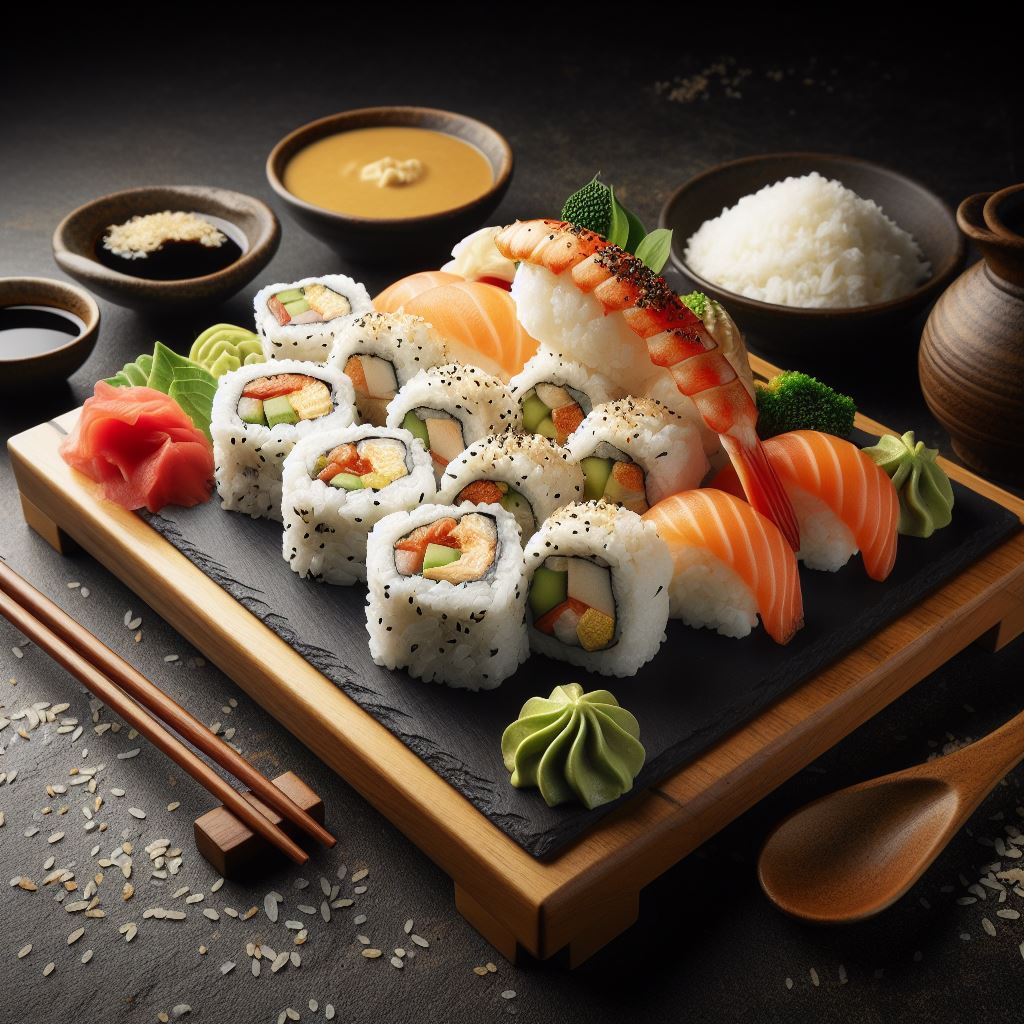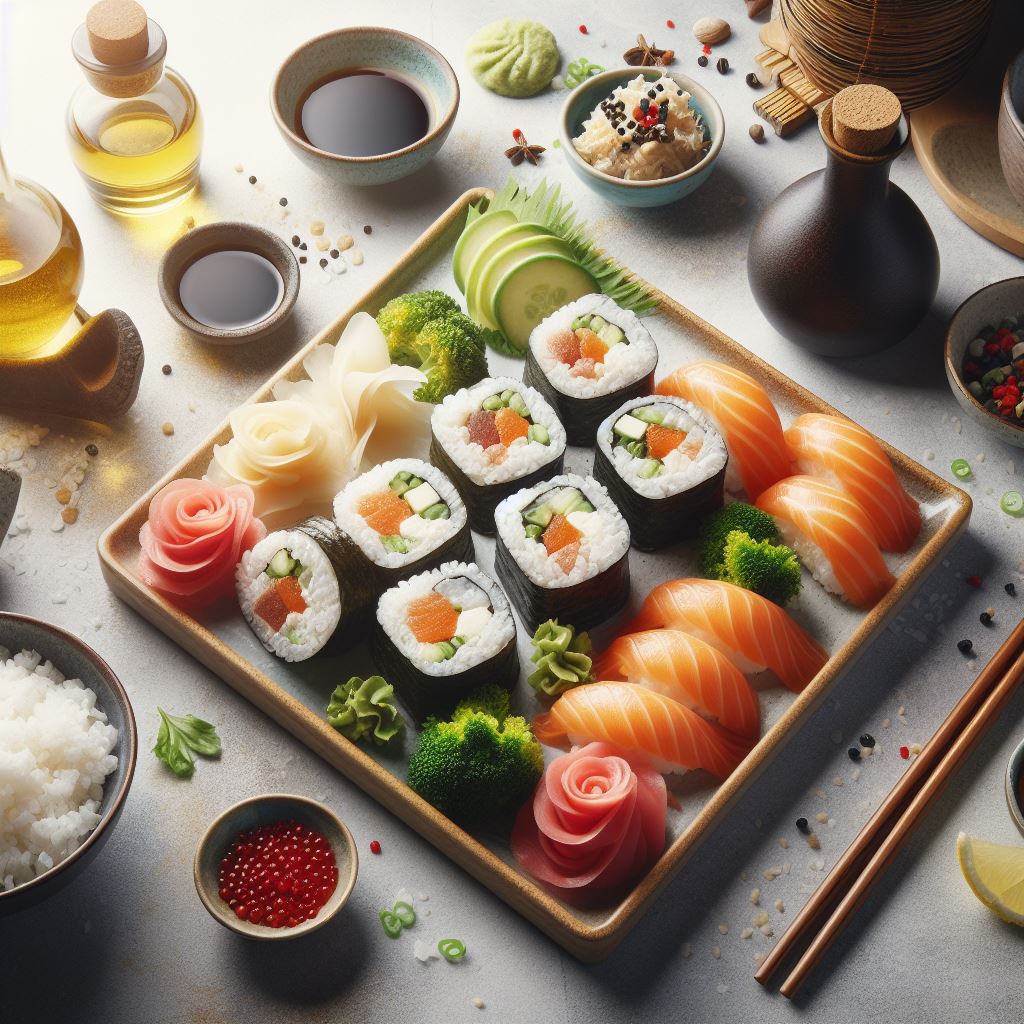Perfect Rice Cooking for Sushi Rolls: A Step-by-Step Tutorial
Looking to master the art of making sushi rolls at home? Look no further! Our comprehensive tutorial on cooking rice for sushi rolls will guide you through the process, ensuring your sushi rice turns out perfectly every time. Whether you’re a beginner or an experienced sushi enthusiast, these step-by-step instructions will help you create delicious sushi rolls that will impress your family and friends. So let’s dive in and discover the secrets to achieving the ideal sushi rice consistency!
We are going to make delicious Rice for sushi together at LANDIYUM.

INGREDIENTS
1.Short-grain Japanese rice: Choose a high-quality short-grain Japanese rice variety, such as Koshihikari or Sasanishiki, known for its stickiness and texture.
2.Water: Use clean, filtered water for cooking the rice. The ratio of water to rice is 1:1, meaning equal parts water and rice.
3.Rice vinegar: Traditionally, rice vinegar is used to season sushi rice and give it a tangy flavor. You’ll need about 1/4 cup of rice vinegar for every 2 cups of cooked rice.
4.Sugar: Add sweetness to the sushi rice by including around 2 tablespoons of granulated sugar for every 2 cups of cooked rice.
5.Salt: Enhance the overall taste with a pinch of salt, approximately 1/2 teaspoon for every 2 cups of cooked rice.
Preparation Method
Step 1: Choosing the Right Rice
To create authentic sushi rolls, it’s essential to start with the right type of rice. Opt for short-grain Japanese rice, which has the perfect balance of stickiness and texture. Rinse the rice a few times until the water runs clear to remove any excess starch.
Step 2: Proper Rice-to-Water Ratio
Achieving the correct rice-to-water ratio is crucial for perfectly cooked sushi rice. Use a 1:1 water-to-rice ratio for a standard cooking method. For example, if you’re cooking 2 cups of rice, add 2 cups of water. This ratio may vary depending on your rice cooker or cooking method, so always refer to the manufacturer’s instructions.
Step 3: Soaking the Rice
Before cooking, allow the rinsed rice to soak in water for about 30 minutes. This step helps the rice absorb water evenly, resulting in a consistent texture after cooking.
Step 4: Cooking the Rice
If using a rice cooker, simply follow the manufacturer’s instructions. If cooking on a stovetop, bring the soaked rice and water to a boil, then reduce the heat to low and cover. Allow the rice to simmer for about 15-20 minutes until the water is fully absorbed and the rice is tender.
Step 5: Letting It Steam
Once the rice is cooked, let it sit covered for an additional 10 minutes. This steaming process allows the grains to fully absorb any remaining moisture, resulting in perfectly fluffy sushi rice.
Step 6: Seasoning the Rice
To achieve the signature sweet and tangy flavor of sushi rice, it’s crucial to season it properly. In a small bowl, combine rice vinegar, sugar, and salt. Gently fold this mixture into the cooked rice while it’s still warm, being careful not to mash the grains. Spread the rice onto a large flat surface, such as a wooden sushi oke or a baking sheet, to cool it down.
Conclusion
Congratulations! You have now mastered the art of cooking sushi rice. Use it as the foundation for your favorite sushi rolls, such as California rolls, spicy tuna rolls, or salmon avocado rolls. Remember, practice makes perfect, so don’t be discouraged if your first attempt isn’t flawless. With time and experience, you’ll become a sushi rice pro!

Mastering the Perfect Sushi Rice: Tutorial and Essential Ingredients
Quality of Rice: When choosing short-grain Japanese rice for sushi, opt for a high-quality variety. Look for rice labeled as “sushi rice” or specifically marketed for sushi making. The quality of the rice will greatly impact the final result of your sushi rolls.
Rinsing the Rice: Rinsing the rice before cooking is crucial to remove excess starch and ensure the grains cook evenly. Use cold water and gently swish the rice around with your fingers. Repeat this process a few times until the water runs clear.
Soaking Time: Allowing the rinsed rice to soak in water for approximately 30 minutes helps the grains absorb water more evenly. This step contributes to achieving a consistent texture in the cooked rice.
Cooking Methods: While the tutorial mentions using a rice cooker or stovetop method, there are other ways to cook sushi rice as well. Some people prefer using an Instant Pot or microwave rice cooker. Adjust the cooking time and water-to-rice ratio according to the specific instructions of your chosen cooking method.
Steaming Time: After the rice is cooked, it’s important to let it steam for an additional 10 minutes. This steaming process helps the rice absorb any remaining moisture and results in a fluffier texture.
Cooling the Rice: Once seasoned, it’s recommended to spread the sushi rice onto a large flat surface, such as a wooden sushi oke or a baking sheet. This allows the rice to cool down and stop the cooking process. Avoid using metal containers as they can react with the rice vinegar, altering the taste.



